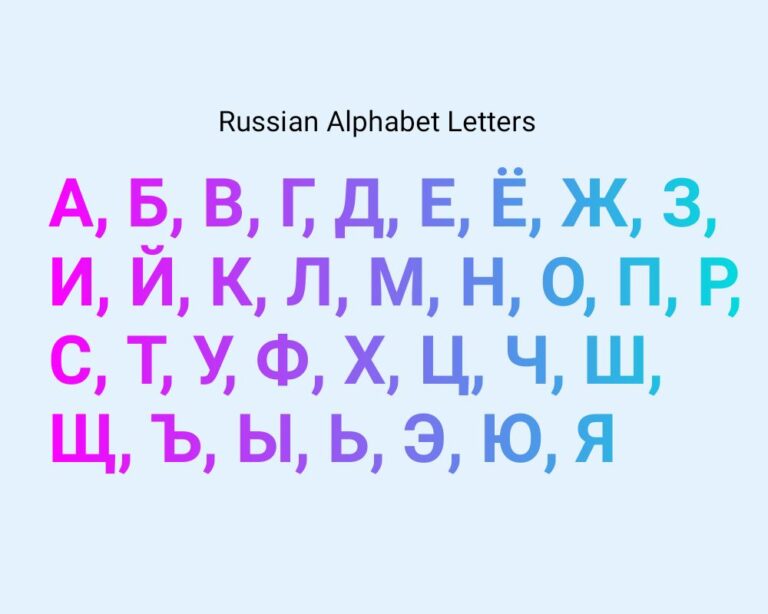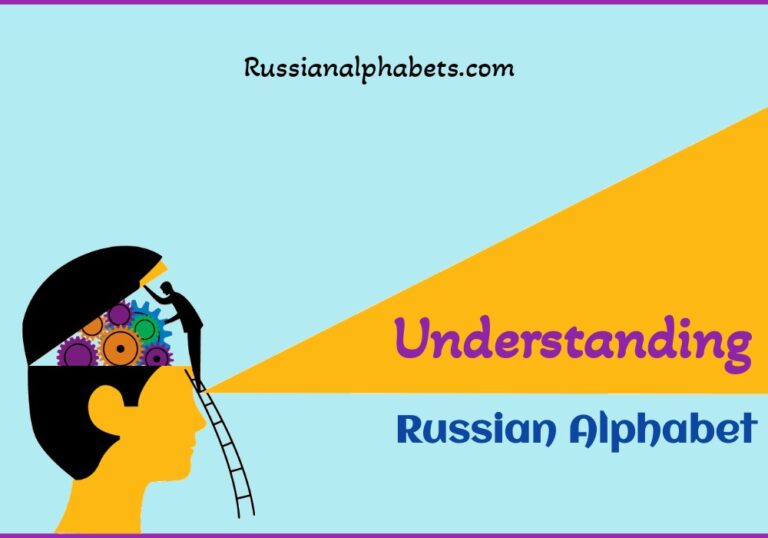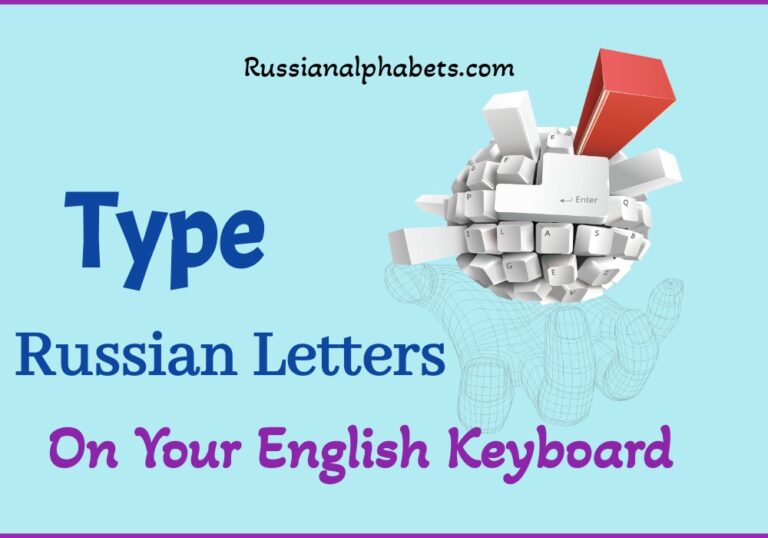Russian Alphabet With Example Words
If you’re looking to learn the Russian alphabet With Example Words, there’s no better resource than Russianalphabets.com.
We provide clear and concise information on each letter of the alphabet and example words to help you remember what you’ve learned.
We also offer a unique learning system that helps you quickly and easily master the alphabet. With our system, you’ll be reading and writing in Russian quickly!
If you’re interested in learning the Russian alphabet, this article will give you everything you need.
We’ll give you a brief history of the Cyrillic alphabet and then provide some tips on how to learn it. We’ll also include a list of example words to see how the alphabet is used in everyday life.
You won’t believe how simple the Russian alphabet can be! Check out these example words.
If you’ve ever looked at the Russian alphabet and thought it looked daunting, think again! The Cyrillic alphabet, as it’s called, is quite simple.
| Russian | Equivalent to English | Example Word | Translation |
| А | А | father | ah |
| Б | B | bad | beh |
| В | V | van | veh |
| Г | G | go | geh |
| Д | D | doc | deh |
| Е | ye | yes | yeh |
| Ё | yo | yorker | yo |
| Ж | Z | s in pleasure | zheh |
| З | Z | zoo | zeh |
| И | ee | see | ee |
| Й | I or y/j | boy or toy | kratkoyeh |
| К | K | kitten, catch. | kah |
| Л | L | lime | ehl |
| М | M | mat | ehm |
| Н | N | no | ehn |
| О | more | oh | |
| П | P | pot | peh |
| Р | R | Run | ehr |
| С | S | Sam | ehs |
| Т | T | Tap | teh |
| У | U | boot | oo |
| Ф | F | fat | ehf |
| Х | Kh, h | ch in Scottish loch / h in hello | khah |
| Ц | TS | bits | tseh |
| Ч | Ch | chip | cheh |
| Ш | Sh | shut | shah |
| Щ | Sh | sheep | schyah |
| Ъ | silent | – | tvyordiy znahk |
| Ы | I | ill | i |
| Ь | silent | – | myagkeey znahk |
| Э | E | pet | eh |
| Ю | YU | university | yoo |
| Я | YA | yard. | yah |
There are only 33 letters, many of which look similar to their English counterparts. Take a look at these example words to see how easy it is:
Мама (mama) – This word means “mom” in Russian. As you can see, it resembles the English word “mom.”
Папа (papa) – This word means “dad” in Russian. Again, it looks very similar to the English word.
Стул (stool) – This word means “chair” in Russian. You might be able to guess that from the way it looks!
How the Russian Alphabet Words Can Help You Learn a New Language
The Russian alphabet can be a great place to start if you want to learn a new language. The Cyrillic alphabet, used in Russian, contains 33 letters and is very similar to the Latin alphabet used in English. This means that learning the Cyrillic alphabet can help you quickly pick up some of the basics of Russian.
In addition, many Russian words are made up of a combination of Cyrillic letters and Latin letters. For example, the word “computer” is written as “компьютер” in Cyrillic. By knowing the Cyrillic alphabet, you can quickly decipher these words and begin to build your vocabulary.
Finally, learning the Cyrillic alphabet can also help you better understand the grammar of Russian.
The Russian Alphabet: A Beginner’s Guide
If you want to learn the Russian alphabet, this beginner’s guide is a great place to start. The Russian alphabet comprises 33 letters, including ten vowels and 21 consonants.
While some of the letters are similar to English, there are also many differences. For example, the letter Ё is pronounced differently than Е, and the letter Ы doesn’t exist in English.
Learning the Russian alphabet can initially seem daunting, but it’s easier. With a little practice, you can read and write Russian like a native speaker in no time.
How to Master the Russian Alphabet
If you want to learn the Russian alphabet, there are a few things you need to know:
- The Russian alphabet consists of 33 letters, which are all Cyrillic letters.
- The Russian alphabet is phonetic, meaning each letter corresponds to a specific sound.
- The Russian alphabet is easier than it may seem at first glance.
With just a little bit of practice, you can easily master the Russian alphabet. Here are a few tips to help you get started:
Start by learning the pronunciation of each letter. You can find audio recordings of the alphabet online or in language learning materials. Once you know how to pronounce each letter, practice writing them out. This will help improve your memory and recognition of the letters.
How knowing Russian can help Americans
If you’re among the many Americans who think learning Russian is a waste of time, think again. There are plenty of reasons why knowing Russian can be helpful, whether you’re looking to boost your career or improve your cultural literacy.
Here are just a few ways that learning Russian can help Americans:
- Understanding Russia’s perspective on international issues.
- Giving you an edge in the job market.
- Helping you connect with Russian friends and family members.
- Allowing you to travel more easily in Russia and other Slavic countries.
- Exposing you to a rich culture and literature.
American businesses find success in Russia by learning the language.
In the past decade, American businesses have found increased success in Russia by learning the language. By understanding Russian culture and customs, these businesses have been able to tap into a new market and expand their operations.
American businesses have found that a growing middle class in Russia is eager to consume Western products and services. To successfully cater to this market, it is essential to communicate with them in their native language.
American businesses can build trust and rapport with potential customers by learning Russian. They can also better understand the Russian market’s needs and develop marketing strategies tailored to appeal to this group. As a result, these businesses have seen a significant increase in sales and profits.
Conclusion Points
The Russian alphabet has 33 letters. The letters are pronounced as follows: a, а, б, в, г, х, д, е, э, ю, й, ь, ф, ха, хо, ч, ш, щ.
Each letter represents a unique pair of consonants and vowels. Here are some example words using the Russian alphabet: ache (с ахе), chokolade (кошок лада), gazelle (газель), khamsin (к hамсин).
In conclusion, the Russian alphabet is a fascinating blend of Old Church Slavonic, Cyrillic, and Latin alphabets. With 33 letters, it may seem daunting to learn at first, but with a little practice, it becomes much easier.
By familiarizing yourself with the pronunciation of each letter and some common words, you’ll be on your way to reading and writing in Russian in no time!
FAQs
If you want to learn the ins and outs of the Russian alphabet, this is the website for you! We’ve got everything you need to know, from basic information on the letters and their pronunciations to example words for each.
Plus, we’ve got a handy FAQ section in case you have any questions. So why not give us a try? You won’t be disappointed!
Question (1) – How the Russian Language Alphabet Shapes Words?
Answer: The Russian Language Alphabet also affects the meaning of words. For example, the word “конь” (kon’) means “horse,” while the word “лошадь” (load) means “mare.” The different letters and sounds in each word help to create its meaning.
The Russian Language Alphabet plays a significant role in shaping words and determining their meaning.
Question (2) – Why do Russian words look so different?
Answer: There are several reasons why Russian words look so different from English ones. First, the Cyrillic alphabet is used in Russian, which has different letters than the Latin alphabet used in English.
Second, Russian has many more vowel sounds than English. Finally, stress patterns in Russian are different from those in English, making words sound even more unfamiliar.
Question (3) – Which Russian alphabet is the most popular?
Answer: The Cyrillic alphabet is Russia’s most widely used alphabet today. It was created in the 9th century by Saint Cyril, a Greek monk. The Cyrillic alphabet has been used to write Russian since the early 18th century.
The Latin alphabet, the Roman alphabet, is Russia’s second most popular alphabet. It was introduced into Russia in the early 18th century by Peter the Great. The Latin alphabet is used to write Russian names and words of foreign origin.
The third most popular Russian alphabet is the Glagolitic alphabet. Saint Cyril created it in the 9th century, and it was used to write Old Church Slavonic. The Glagolitic alphabet fell out of use in the 12th century but has been revived recently for use in liturgical books and inscriptions.
Question (4) – What are some example words in the Russian Alphabet?
Answer: The Russian alphabet is made up of 33 letters. The following are some examples of words in the Russian alphabet:
- Абажур – chandelier
- Буква – letter
- Вода – water
- Город – city.
Each letter in the Russian alphabet has a different sound, and no silent letters exist. This can make learning challenging for English speakers, but it’s easier once you get the hang of it.
Question (5) – How to get a free Russian alphabet PDF?
Answer: If you’re looking for a free Russian alphabet PDF, you can get one from here. Just scroll down to the section titled “Russian Alphabet.”
There are two versions of the alphabet – one with transliteration and one without. If you’re unsure which one to use, try both and see which one is easier to read.
Question (6) – How to get a free Russian alphabet handwriting?
Answer: If you want to learn how to write in Russian independently, some resources can help you. One resource is the website “Learn Russian Step by Step.” This website offers lessons on grammar, vocabulary, and alphabet writing.
Another resource is the book “A Handbook of the Russian Alphabet” by Irene Zografova-Vasilieva. This book includes lessons on both Cyrillic and Romanized alphabets. It also includes practice sheets for each letter.
Question (7) – How to ‘Cram’ for Your Next Russian Test and Ace It?
Answer: If you’re like most students, you should wait until the last minute to start studying for your Russian test. And while this may work for some people, there are better ways to learn the language. If you want to ace your next Russian test, you need to start studying early and often.
Here are a few tips on how to ‘cram’ for your next Russian test and Ace It:
- Start studying early and often. The sooner you start studying, the better your chances of doing well on the test. Try to study for at least 30 minutes each day.
- Use all resources available to you. In addition to textbooks and class notes, many online resources can help you learn Russian. Make use of them!
- Practice, practice, practice!
We provide detailed examples for each letter so you can start using them in your writing conversation.







